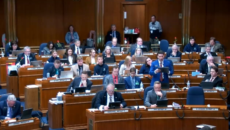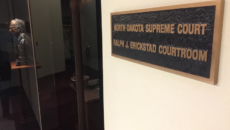Guest Post: Don't Fix North Dakota's Oil Tax

It was the best of times, it was the worst of times
By this, I am not suggesting extensive expertise of the oil industry nor how our state taxes it. Maybe that’s the problem? I am not sure many people understand oil taxes outside a select few who make or lobby for the rules. Those same people are largely the media’s source for information on oil taxes. So what are we to think? Is oil tax policy currently set in the best interests of the state? At the same time, is it fair to oil companies and the risks they take? The core of our oil tax rates were set by initiated measure in 1980, after the legislature repeatedly failed to act. A review of those rates perhaps makes sense these years later.
Nearly every session since that original measure, various incentives, deductions, strike prices, and so on have somehow worked their way into the century code – largely undetected by a public that biannually became less and less able to comprehend the complexity. Therefore, a review of all that stuff makes some sense also.
Critical to any serious review of oil taxes, rates and exemptions equally, is history – in particular, legislative history. There are some bodies buried in that legislative history. Session after session, in the 1980’s, 1990’s, and the 2000’s, the paper oil tax rates stayed the same, but “incentives”, “exemptions”, what some would call “loopholes”, were brought before the legislature by the oil industry. Synopsizing all that into a theme: “There is some new technology for horizontal drilling, for injection wells, for drilling deeper, for fracking shale, for whatever”. “If you legislators tax-exempt the first X amount of oil produced by these new methods it will incentivize greater production down the road – which you will then capture at your normal extraction rates”.
I am paraphrasing that, but it was the general idea for the past three decades. In broad strokes, a lot of that seems to make sense to my untrained eye. However, let’s not fool ourselves by our own press clippings. The media reports on how much oil revenue we have, and does so frequently. What the media doesn’t cover, to any degree, is how much oil we haven’t taxed, and don’t tax now, at least at normal rates. Our legislature has tax-exempted an awful lot of oil over the years. In essence, we are currently recovering the “costs” of those many historical tax “incentives” because oil prices have stayed above benchmark triggers that the industry has previously agreed with to get “incentives”.
As oil extraction has developed in our state, other economic sectors bore burdens without the oil revenues enjoyed today. One story I recall was that Williston came into this present oil boom still carrying $20 million in bond debt from the last oil boom. Couple those type of things with oil being a one-time resource, and it has oil tax policy set apart from other taxes where I can support reductions without concern.
So, are the proposed “major” changes to oil taxation for the better or worse? That’s the multi-billion dollar question. The reality of political patronage and inside baseballism – always at play, but is it driving the train or just along for the ride? As Dickens would say, are we approaching oil tax policy from an age of wisdom, or an age of foolishness? Most likely, parts of both.
Mr. Harold Hamm, CEO of Continental Resources (CLR), and former governor Ed Schafer his board member, seem much more publically subdued about oil taxes this session. Recalling last session, the two had the “FixTheTax” bus tour going around the state harpooning our oil tax rates. At the time, CLR’s share price was about $43, and its internal rate of return ranged from 25% to 65% per Bakken well. Those excellent results, under our existing tax structure, had CLR devoting 72% of its drilling capital to expanding its drilling in the Bakken. Despite that, we were being told at the bus stops that if oil taxes weren’t reduced extraction companies would pack up their balls and gloves and go home.
This session’s game plan seems more nuanced. In his blog post regarding SB2336, Gov. Schafer is critical of some minor portions of the bill, and silent on the bills oil tax reductions that even I can figure out will mean billions in long term revenue losses to the state.
Perhaps the new approach has something to do with CLR’s current share price of $84, a doubling in value since last session when our oil taxes were going to kill the Bakken play. Not only that,CLR’s 2009 goal of tripling production and reserves in five years is ahead of schedule , and Mr. Hamm has a goal of tripling production and reserves once again by 2017. In SB2336, the major tax reductions start in 2017 – interesting timing?
By all accounts, CLR seems like an excellent company. Perhaps not a great stock buy presently because its debt/asset ratio is pretty high, in part because of its recent large investments in extracting oil in the North Dakota part of the Bakken. And, much of its future growth in revenue is probably already priced into the stock price. (ALERT: That’s amateur stock picking advice, and coming from me it’s certainly that. If anyone actually acted on anything I had to say in this regard it would be the age of foolishness.)
My point is, however, that a review of the quarterly reports and SEC filings found on oil company websites that operate in the Bakken , and the many independent online financial analyst postings, prove two things: First, North Dakota does not unfairly tax the oil industry. Second, any representation from anyone that new oil tax policies and rates are needed to keep the oil companies from divorcing us and moving on to some other shale play, and taking our kids and the dog with them, is pure hogwash. (Instead of discussing CLR, as the example, the same points can be found in reviewing financials for Whiting, EOG, Kodiak, Hess, etc.) The difference is, with CLR it is easier to compare the propaganda about our oil taxes to financial reality because CLR officials have publically tried so hard to influence our oil tax policies.
On one hand our legislature and the public are made to think that we have an oppressive oil tax system in need of major reforms and reductions, and all for our own good. On the other hand, investors are told to load into oil companies with North Dakota Bakken holdings because great profit margins and growth awaits.
Alaska is presently going through its own oil tax drama. The big pitch from their governor is that North Dakota is going to suck all the oil companies away from them: “Everyone likes a good tax break, and Alaska’s governor is courting the oil and gas, timber and mining industries with a legislative proposal designed to make the state as attractive as North Dakota.”
If we are going to have a rational debate about oil taxes this session, something we should all support, cutting out the irrational (the age of foolishness) pronouncements telling the public that if the oil tax rates don’t appease some members of the industry they will all pack onto the next train out of Dodge, Golden Valley, Watford City, Stanley, etc. Shale plays in other states have their own set of players angling for tax breaks “or else” they will be coming here; and, there would be some darn good shareholder lawsuits against some Bakken companies if they decided to hit the road in a hissy over a point or two on our tax rates, or some loophole, and broke all their production and revenue promises to investors over it. Oil companies go where the oil is – everything else is huff and fluff.
It is a fool’s errand to cursorily compare oil tax rates between states because there are too many non-linear factors that linear model comparisons can’t account for. Some states have property taxes on wells, we don’t. Many states have higher corporate tax rates than ours and that needs to be factored in. Oil producing states all have their exemptions and loopholes like we do:
“State and local tax burdens on oil producers are endlessly compared in state tax commission and legislative hearings as industry representatives make their case for more favorable tax treatment. Yet, because of variations across states in the application of severance and other taxes, a comparison of nominal tax rates is not particularly useful. A judgment based on a comparison of nominal rates that one state‘s severance tax, for example, is higher than that in another state might easily be reversed once the potentially numerous exemptions, credits, incentives, deductibility, and other special features of tax law are accounted for. “ (page 8-9)
What has been shown in state by state comparisons of oil tax rates is that rates don’t impact production. (I believe “legitimately” defined stripper wells would be an exception to that rule.) Oil production is driven by geology, technology, and oil prices. By way of example, Montana has lower oil tax rates than North Dakota, and the Bakken is under both states. Yet, the geology in our part of the Bakken is much more productive than it is in Montana. This is verified by the fact that CLR has been much more interested in accumulating more expensive North Dakota Bakken leases than cheaper Montana Bakken leases, and willing to extract North Dakota oil at a higher tax rate than they would pay on the other side of our western border. “It is clear that Continental prefers adding acreage on the expensive North Dakota side instead of the cheaper and highly speculative Montana side.”
Harold Hamm is one of the most impressive businessmen of our time. Does anyone really think he would pay more for leasing minerals in North Dakota, and pay a bit higher tax rate (compared on paper to Montana’s) to extract those minerals, if it wasn’t a good deal for him and his investors? Obviously not. And that gets us back to the multi-billion dollar question. If Mr. Hamm has found such a good deal here, forsaking some other oil plays, why are our current oil tax rates a bad deal for the state? In the end, that is the question before each legislator despite whatever lobbyists are lining the walls of the Capitol.
Let’s end on a positive note. SB2336 partially addresses the biggest sucking chest wound in our oil tax policy – that being, stripper wells. Everyone seems to agree, including Gov. Schafer, that the current stripper well rules are ridiculous. Whether the state has only lost hundreds of millions of dollars in revenues over the years, instead of more than that, on account of our stripper well rules is an interesting question?
The concern is: Does SB2336 move us out of the age of foolishness to the age of wisdom with its proposed changes, or just tweak things a bit? The National Stripper Well Association, and it seems the rest of the world, defines “stripper wells”, as: “A stripper well produces 10 barrels of oil or 60 thousand cubic feet of natural gas per day or less.” SB2336 defines stripper wells as producing 45 bpd or less, up from our already expansive 30 bpd. Which begs the question: What do we know that everyone else doesn’t?
Additionally, in North Dakota, once a well is designated as a stripper well that’s it, it never comes off that status even if production increases above the benchmark. To the best of my knowledge we are the only state that does that, and it doesn’t appear like the North Dakota only once-a -stripper –well- always a- stripper- well rules are addressed by SB2336. Even assuming some oil companies don’t artificially war- game well production levels around stripper well benchmarks, there is enhanced recovery technology always coming on line, and even federal programs to foster those enhancements, again begging the question: Why not fix this if the goal is rational/wise oil tax policy?
In 2017, SB2336 knocks two points off our extraction tax, or billions of dollars over the long term. The bill does have some wisdom in its address to stripper well “properties” – so legitimate stripper wells are no longer used to tax exempt high producing wells on the same property. But, it was always a foolish practice to do that, so fixing it doesn’t mean horse-trading the stripper well benchmark up to 45 bpd for the sake of industry support for the bill is wise policy. (If that what’s going on with this?)
Combining the 2017 extraction tax reduction from 6.5% to 4.5%, with the new 45 bpd stripper well benchmark creates a dynamic fiscal pincer move for the state. The extraction tax rate reduction begins January 1st, 2017, immediately before that session starts – and leaving only the 2015 session between now and then. What will the state’s budget situation be then? Will agriculture be in a drought cycle? Will the state’s current allotments from the federal budget be half or less than today? Will we still need more judges, DNA chemists, highway patrolman, classrooms, jail space, road repairs, and all the other needs purportedly being addressed this session? (How would current legislators view the wisdom of legislators from the 2009 session setting a major policy into effect one week before coming to town for this session?)
Likewise without knowing any of those things, how can a 2013 legislator – republican, democrat, urban, rural – whatever, know that an extraction tax rate of 4.5% going into effect right before the 2017 session is the best policy prescription for the state? And, if the 2017 legislature has to amend that rate back to face reality, do you think that the ensuring bus tour would show any mercy because then the legislators would be “tax raisers”. While I think extending any tax change to December 31st, 2016, is bad civics all around, if something like that is going to happen it seems wiser to go to December 31st, 2017, so the 2017 session can review the real world one final time.
And that moves us to the second part of SB2336 pincer move. From my understanding, the average Bakken well takes 6-8 years to hit stripper status, sooner if the benchmark is liberalized to 45 bpd. Most of the wells drilled in the past few years will be stripper wells, by definition, in 2017 and forward. Sometime in the 2020’s the area we now call the oil patch could be preeminently in stripper status- again by SB2336’s definition. But the all needs supported by oil revenue in the oil patch, and the rest of the state, will not have disappeared along with the extraction tax on those wells.
Here is the SB2336 pincer move in stark terms: Presently our average effective oil tax rate is about 10.2% (I think it is actually less than that when all the stripper well games are factored in.) When the paper extraction tax rate goes down to 4.5% in 2017, our effective oil tax rate will be around 8.2%. But, with moving the stripper well benchmark up to 45 bpd, and physically on the ground, having hundreds of wells constantly rolling into the stripper status by then, our effective “overall” oil tax rate will drop and drop and drop off a cliff until it gets near the production tax rate. Then what?
How will the 2019, or so, legislature deal with that? What cards does SB2336 leave them in the horse-trading with the industry that seems necessary to get anything passed? Cut the production tax rate in exchange for fixing the stripper well problems? Get the bus warmed up.
I wanted to end on a positive, so how’s this: Let’s all hope that at the end of the session our oil tax chapter of the century code doesn’t (even more? ) read like a Dickens novel. Best I can do.







